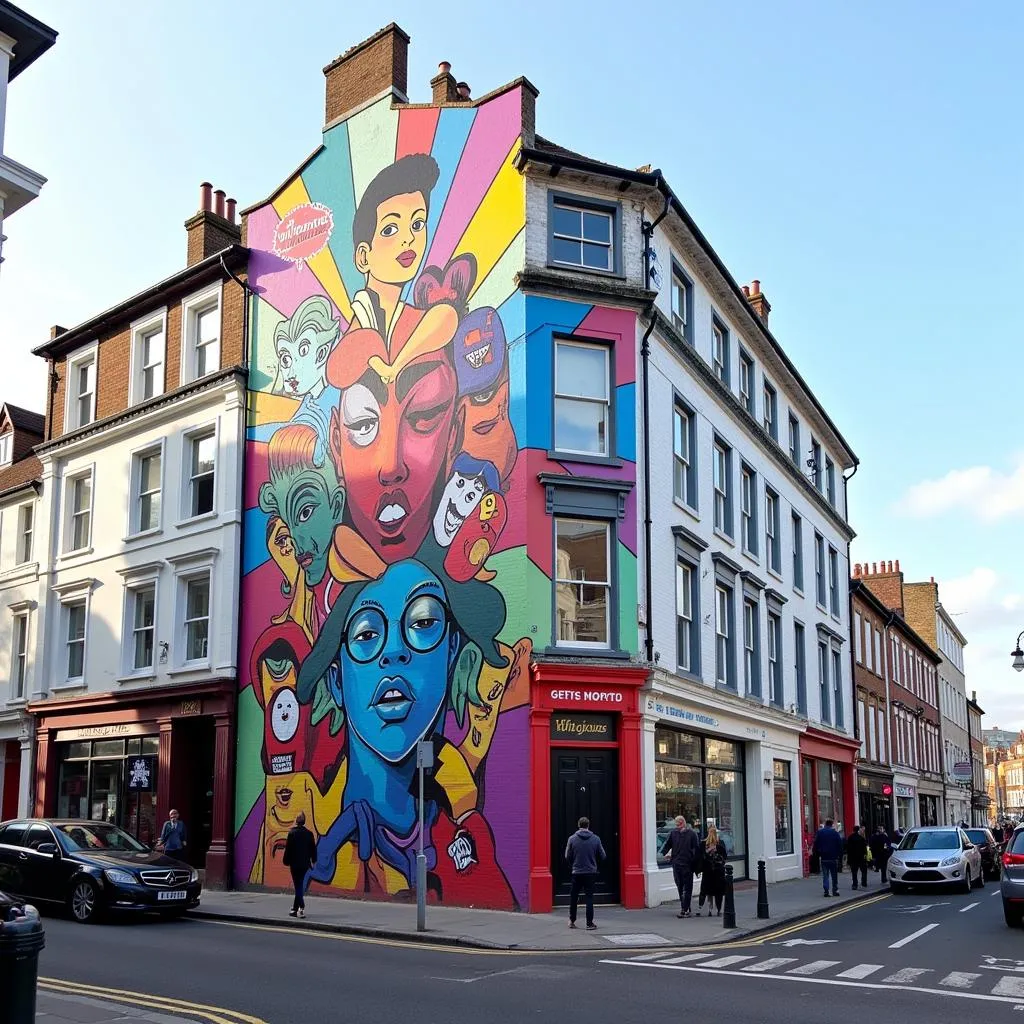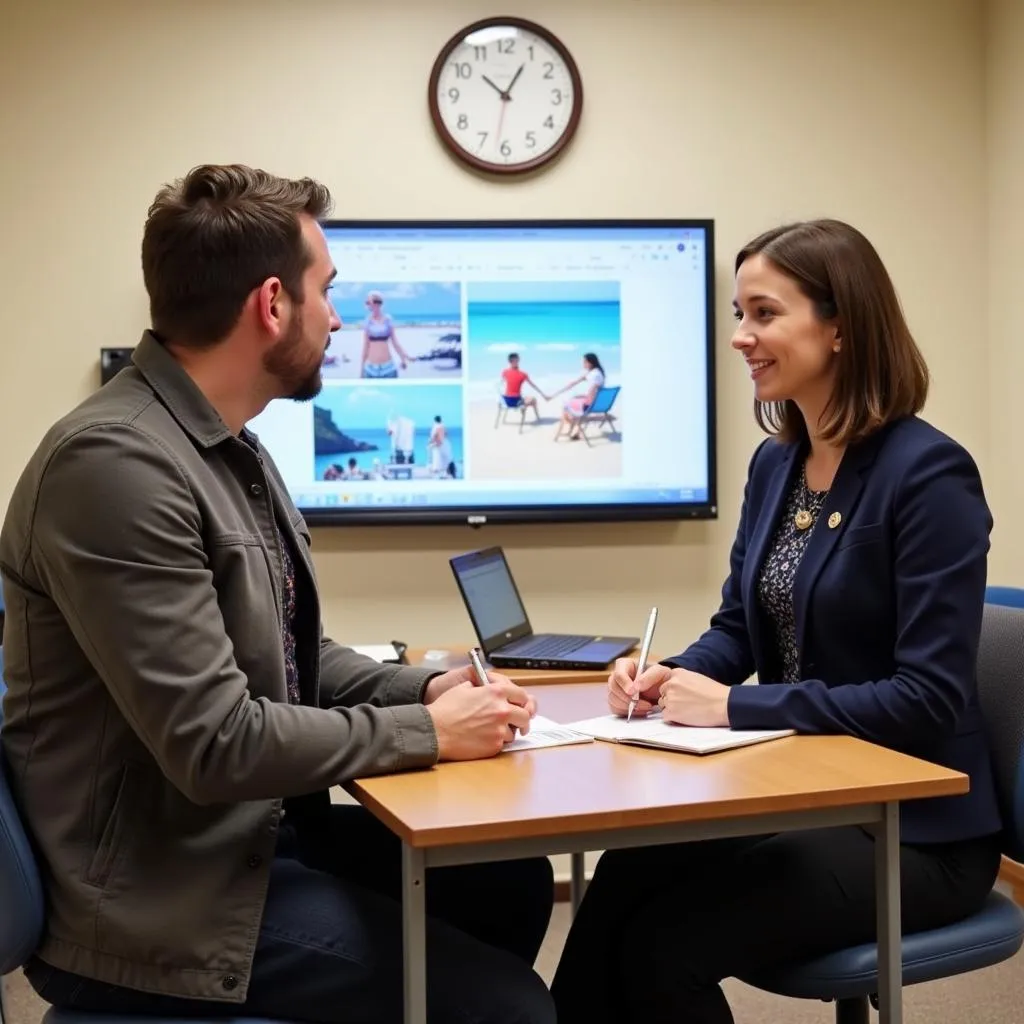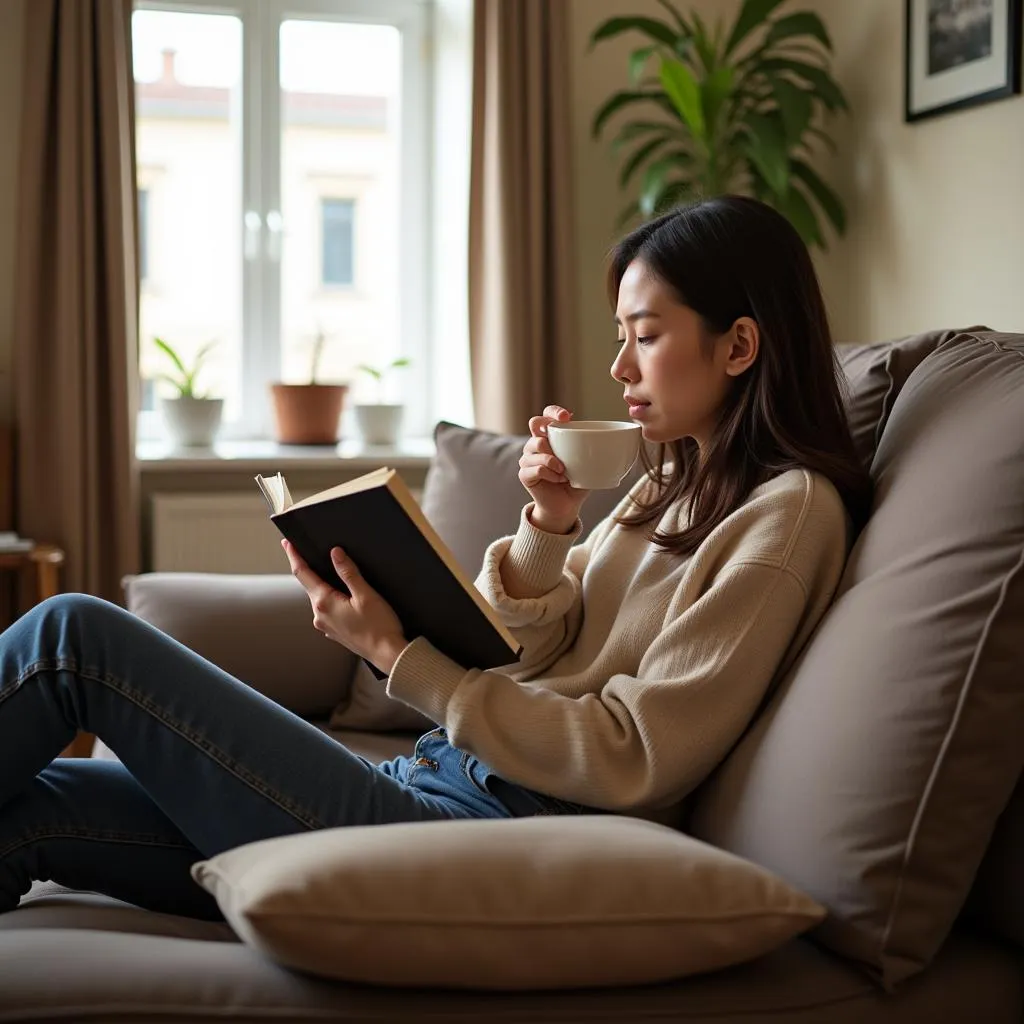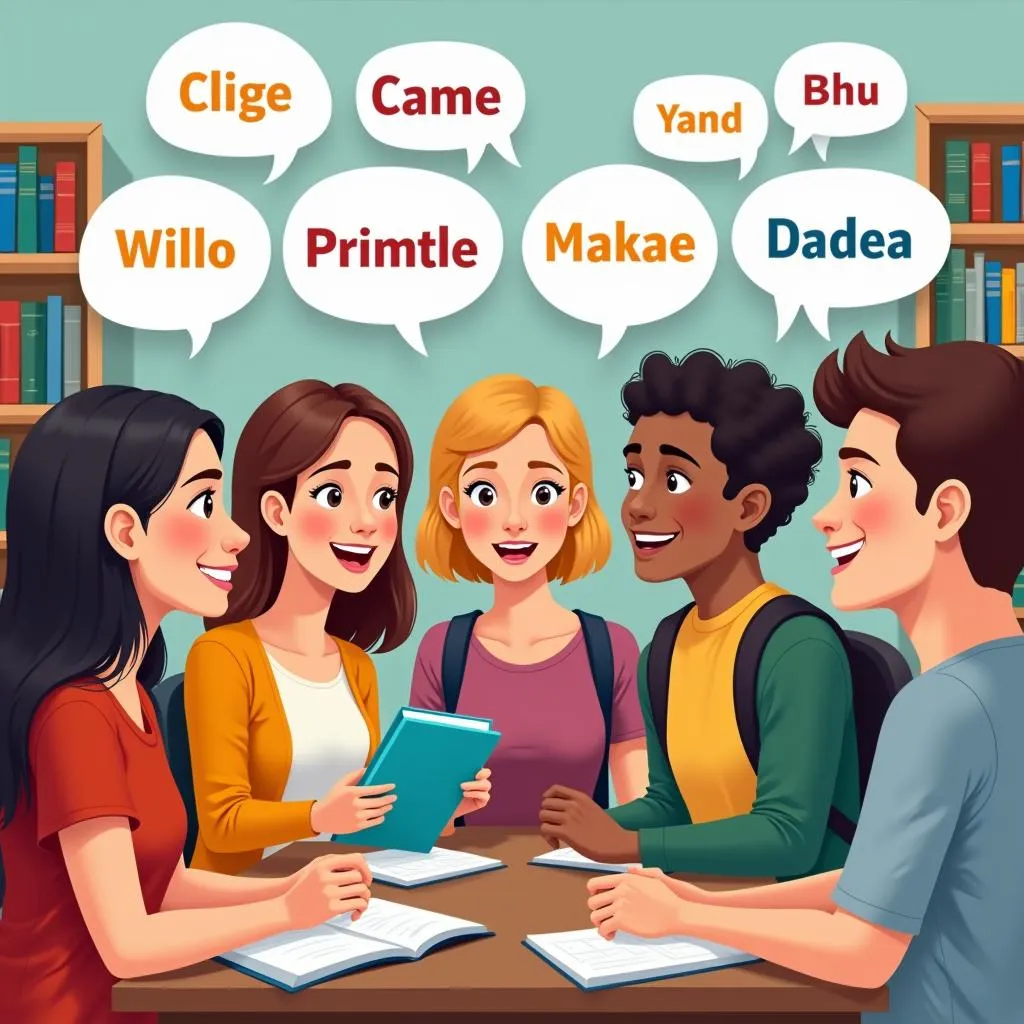Describing a place you visited on vacation is a common topic in IELTS Speaking tests. This theme has appeared frequently in past exams and is likely to remain relevant in future tests. To help you excel in this task, we’ll explore effective strategies and provide sample answers for different band scores.
Nội dung bài viết
Part 1: Introduction and Interview
In this section, the examiner may ask general questions about your travel experiences. Here are some common questions and a sample answer:
- Do you like traveling?
- What kind of places do you usually visit on vacation?
- How often do you go on vacation?
Let’s focus on the third question:
Examiner: How often do you go on vacation?
Sample answer (Band 7-8):
“Well, I try to go on vacation at least twice a year. Usually, I take a short trip during the summer, perhaps a weekend getaway to a nearby city or beach. Then, I plan a longer vacation, typically lasting about two weeks, during the winter months. This allows me to escape the cold weather and explore some tropical destinations. Of course, it also depends on my work schedule and budget, but I make it a priority to take time off and recharge regularly.”
Describe a fish market you visited can be an interesting topic to discuss when talking about unique places you’ve been to during your travels.
Part 2: Long Turn (Cue Card)
Here’s a sample cue card related to describing a place you visited on vacation:
Describe a place you visited on vacation
You should say:
- Where it was
- When you went there
- What you did there
- And explain why you enjoyed visiting this placeSample answer (Band 6-7):
“I’d like to talk about a place I visited on vacation last summer. It was a small coastal town called Brighton, located in the south of England. I went there with my family for a week-long trip in July.
Brighton is known for its beautiful pebble beach and historic pier. During our stay, we spent a lot of time exploring the seaside attractions. We walked along the famous Brighton Palace Pier, which has many fun rides and arcade games. We also visited the Royal Pavilion, an exotic palace with Indian and Chinese architecture.
One of the highlights of our trip was trying out different water sports. We went paddle boarding and even attempted windsurfing, which was quite challenging but exciting. In the evenings, we enjoyed strolling through the narrow lanes of the city, filled with quirky shops and cozy restaurants.
I really enjoyed visiting Brighton because it offered a perfect mix of relaxation and adventure. The laid-back atmosphere of the beach town combined with the variety of activities available made it an ideal vacation spot. The charm of the old buildings and the friendly locals added to the overall experience, making it a memorable trip for my family and me.”
Sample answer (Band 8-9):
“I’d like to regale you with an account of my recent sojourn to the picturesque coastal town of Brighton, nestled in the south of England. This enchanting destination caught my attention, and I decided to embark on a week-long escapade there with my family last July.
Brighton is renowned for its distinctive pebble beach and iconic pier. During our stint there, we immersed ourselves in the seaside attractions. We meandered along the illustrious Brighton Palace Pier, which boasts a plethora of exhilarating rides and vintage arcade games. We also paid a visit to the Royal Pavilion, an exotic palace that showcases a mesmerizing blend of Indian and Chinese architecture.
One of the highlights of our trip was dabbling in various water sports. We tried our hand at paddle boarding and even ventured into windsurfing, which proved to be quite challenging yet invigorating. As dusk fell, we relished strolling through the labyrinthine lanes of the city, brimming with quirky boutiques and quaint eateries.
I found Brighton utterly captivating due to its perfect amalgamation of relaxation and adventure. The laid-back ambiance of this seaside town, coupled with the diverse array of activities available, made it an idyllic vacation spot. The charm exuded by the historic buildings and the warm hospitality of the locals augmented the overall experience, rendering it an indelible memory for my family and me.”
Follow-up questions:
- What was the most interesting thing you learned about the local culture?
- Would you recommend this place to others? Why or why not?
Sample answer for question 1 (Band 8-9):
“The most fascinating aspect of Brighton’s local culture that I discovered was its thriving arts scene and bohemian spirit. The city is home to a vibrant community of artists, musicians, and performers who have transformed many areas into creative hubs. I was particularly struck by the street art in the North Laine area, where elaborate murals adorned building walls, telling stories of the city’s history and contemporary issues. This artistic expression seemed to perfectly encapsulate Brighton’s free-spirited and inclusive nature, making it stand out from other seaside towns I’ve visited.”
 Colorful street art in Brighton's North Laine
Colorful street art in Brighton's North Laine
Part 3: Two-way Discussion
In this section, the examiner will ask more abstract questions related to the topic. Here’s an example:
Examiner: How do you think tourism affects local communities?
Sample answer (Band 6-7):
“Tourism can have both positive and negative effects on local communities. On the positive side, it brings in money and creates jobs for local people. Many businesses like hotels, restaurants, and shops benefit from tourists. It can also help preserve local culture and traditions as people become interested in learning about them.
However, there can be some downsides too. Sometimes, popular tourist destinations become very crowded, which can be annoying for the people who live there. It might also lead to higher prices for things like housing and food, which can be difficult for locals. There’s also a risk of damaging the environment if too many people visit natural areas.
I think it’s important for communities to find a balance between welcoming tourists and protecting their local way of life and environment.”
Sample answer (Band 8-9):
“Tourism can have a profound impact on local communities, with both beneficial and detrimental consequences. On the positive side, tourism often serves as a significant economic driver, generating revenue and creating employment opportunities for local residents. It can stimulate the growth of various sectors, including hospitality, retail, and transportation. Moreover, tourism can play a crucial role in preserving and revitalizing local cultures and traditions, as it often sparks interest in the unique heritage of a destination.
However, the influx of tourists can also pose challenges. Overtourism in popular destinations can lead to congestion and put a strain on local infrastructure. This can result in a diminished quality of life for residents and potentially erode the authentic character of a place. Additionally, tourism can contribute to inflation in local economies, particularly in housing and consumer goods, which may adversely affect long-term residents.
Environmental concerns are another critical consideration. While tourism can raise awareness about natural habitats and encourage conservation efforts, it can also lead to ecological degradation if not managed sustainably.
I believe the key lies in implementing responsible tourism practices that strike a balance between economic benefits and the preservation of local ecosystems and cultures. This might involve measures such as visitor caps, promoting off-season travel, and investing in sustainable infrastructure. By doing so, communities can harness the positive aspects of tourism while mitigating its negative impacts, ensuring a harmonious coexistence between visitors and residents.”
Describe a building you visited that left a strong impression can be an interesting addition to discussing the impact of tourism on local architecture and cultural heritage.
Key Vocabulary and Phrases for High Scores
To enhance your speaking performance, incorporate these advanced words and phrases:
-
Sojourn (noun) /ˈsɒdʒɜːn/ – a temporary stay
Example: “My sojourn in Paris lasted for three memorable weeks.” -
Picturesque (adjective) /ˌpɪktʃəˈresk/ – visually attractive, especially in a quaint or charming way
Example: “The picturesque village was nestled in a valley surrounded by mountains.” -
Immerse oneself (phrasal verb) /ɪˈmɜːs/ – to involve oneself deeply in a particular activity or interest
Example: “During my trip, I immersed myself in the local culture by attending traditional festivals.” -
Meander (verb) /miˈændə(r)/ – to follow a winding course
Example: “We meandered through the narrow streets of the old town, discovering hidden gems at every turn.” -
Amalgamation (noun) /əˌmælɡəˈmeɪʃn/ – the action or process of combining or uniting
Example: “The city’s architecture was an fascinating amalgamation of modern and traditional styles.”
 Traveler immersing in local culture
Traveler immersing in local culture
Tips from an IELTS Speaking Examiner
To achieve a high score in the IELTS Speaking test, particularly when describing a place you visited on vacation:
-
Use a variety of descriptive language: Incorporate adjectives, adverbs, and vivid imagery to bring your description to life.
-
Structure your answer: Organize your thoughts logically, using discourse markers to connect ideas smoothly.
-
Provide specific details: Instead of general statements, offer concrete examples and personal anecdotes to make your description more engaging and authentic.
-
Demonstrate a range of grammatical structures: Use a mix of simple, compound, and complex sentences, as well as different tenses to show your language proficiency.
-
Practice speaking at length: Train yourself to speak for 1-2 minutes without hesitation, focusing on fluency and coherence.
-
Expand on your ideas: When answering follow-up questions, elaborat e on your initial responses to showcase your ability to discuss topics in depth.
-
Be prepared for abstract questions: In Part 3, be ready to discuss more general themes related to travel and tourism, expressing your opinions clearly and supporting them with reasons.
Remember, the key to success in the IELTS Speaking test is not just about memorizing answers, but about developing the ability to communicate effectively and confidently on a range of topics. Regular practice and exposure to English in various contexts will help you achieve this goal.
Describe a place you go to for a day trip can be a useful topic to practice, as it allows you to apply these skills to a different type of travel experience.
 IELTS speaking practice with an examiner
IELTS speaking practice with an examiner
By incorporating these strategies and practicing regularly, you’ll be well-prepared to excel in the IELTS Speaking test, particularly when describing a place you visited on vacation. Remember to stay calm, speak naturally, and enjoy sharing your experiences with the examiner.
Describe an outdoor activity you tried for the first time can be an excellent way to add variety to your vacation descriptions and showcase your ability to discuss different aspects of travel experiences.


